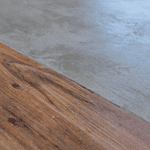Introduction
Pugs are adorable and lovable companions known for their distinctive wrinkled face and curly tail. These small dogs have a short coat that may leave them vulnerable to cold temperatures. As responsible pet owners, it is essential to understand at what temperature pugs may start feeling cold. In this article, we will unveil the chilly truth and provide insights into how to keep your pug warm during colder weather.
Understanding Pug’s Sensitivity to Cold
Pugs have a brachycephalic (flat-faced) structure, which affects their ability to regulate body temperature efficiently. This unique feature makes them more susceptible to extreme temperatures, including both hot and cold weather conditions. While pugs can tolerate mild cold, they are prone to discomfort and potential health issues when exposed to freezing temperatures for extended periods.
At What Temperature Do Pugs Get Cold?
Pugs start feeling cold when the temperature drops below 45 degrees Fahrenheit (7 degrees Celsius). However, it’s important to note that individual pugs may have different tolerance levels. Factors such as age, health, coat thickness, and acclimatization play a role in determining a pug’s sensitivity to cold. Some pugs may exhibit signs of discomfort even at slightly higher temperatures, while others may tolerate colder conditions for a short duration.
Signs of Cold Stress in Pugs
It’s crucial to pay attention to your pug’s behavior and physical signs to identify if they are feeling cold. Here are some common signs of cold stress in pugs:
1. Shivering: Pugs may start shivering when they feel cold. This involuntary muscle movement generates heat to keep their body warm.
2. Curling up: Pugs naturally tend to curl up when they are cold. They may tuck their tail, hunch their back, and bring their legs closer to their body to conserve heat.
3. Seeking warmth: If your pug constantly seeks warm spots in the house or tries to snuggle under blankets, it’s a clear indication that they are feeling cold.
4. Sluggishness: Cold temperatures can make pugs feel lethargic and less energetic. If your pug seems unusually tired or inactive, it might be due to the cold.
5. Pale or blue gums: In extreme cases, prolonged exposure to cold can lead to reduced blood circulation, resulting in pale or bluish gums. This is a serious sign of cold stress and requires immediate attention.
Keeping Your Pug Warm
To ensure your pug stays warm and comfortable during colder weather, consider the following tips:
1. Dress them up: Invest in a well-fitting dog sweater or jacket to provide an extra layer of insulation for your pug. Make sure it covers their chest and back adequately.
2. Limit outdoor exposure: Minimize your pug’s time outside during chilly weather. Take them for shorter walks and provide them with a warm and cozy indoor environment.
3. Create a warm sleeping area: Provide your pug with a comfortable bed away from drafts. Consider using blankets or heated pads to keep them warm during sleep.
4. Protect their paws: Cold surfaces can be harsh on your pug’s paws. Consider using dog booties or applying paw balm to protect their feet from freezing temperatures.
5. Maintain a warm home: Keep your home adequately heated, especially in areas where your pug spends most of their time. Ensure there are no cold drafts near their resting areas.
Conclusion
Pugs have a lower tolerance for cold temperatures due to their unique physical characteristics. It’s important to be aware of their sensitivity and take necessary precautions to keep them warm and comfortable. By understanding the signs of cold stress and implementing the tips mentioned above, you can ensure your pug stays cozy and happy even during chilly weather. Remember, a warm and loved pug is a happy pug!




